This Thursday marks the start of North Carolina’s early voting. While many people have likely been inundated with ads and media coverage about the top of the ticket, it is important to pay attention to lower-ballot races like local state House and Senate Races.
While Republicans are likely to still hold a majority in 2025, the question will be whether they will keep the supermajority they have in both chambers. Republicans currently hold just enough seats in both the House and Senate and will need to win several toss-up and competitive seats to maintain their supermajorities.
While campaigns will soon submit their third-quarter reports to the state board of elections, they are due only six days before the election, leaving little time for the board of elections to process them and the public to dissect them. Though it is slightly dated, the best we can currently go on are the second-quarter reports published earlier this year, which cover up to June 30th.
A complete listing of all State House and Senate Candidates can be found below:
House: https://docs.google.com/spreadsheets/d/1qUeRijuCLUBJGDXGaESVyIGCKL7R906C899Vpl2pML0/edit?usp=sharing
Senate: https://docs.google.com/spreadsheets/d/1bAt3paalh0WleLXZ3x5sc1tV_nL_X_qcFkThnd0W6oY/edit?usp=sharing
According to the Civitas Partisan Index (CPI), there are 10 toss-up and lean seats in the Senate. Below, you can find the CPI rating and current finances as of Quarter 2 reports for all toss-ups (R+1 to D+1 seats) and lean seats (R+2 to R+5/ D+2 to D+5 seats).

The CPI has 26 toss-up and lean seats in the House. The candidate’s Quarter 2 finances are below. The data for both the House and Senate can also be found in a spreadsheet here.

